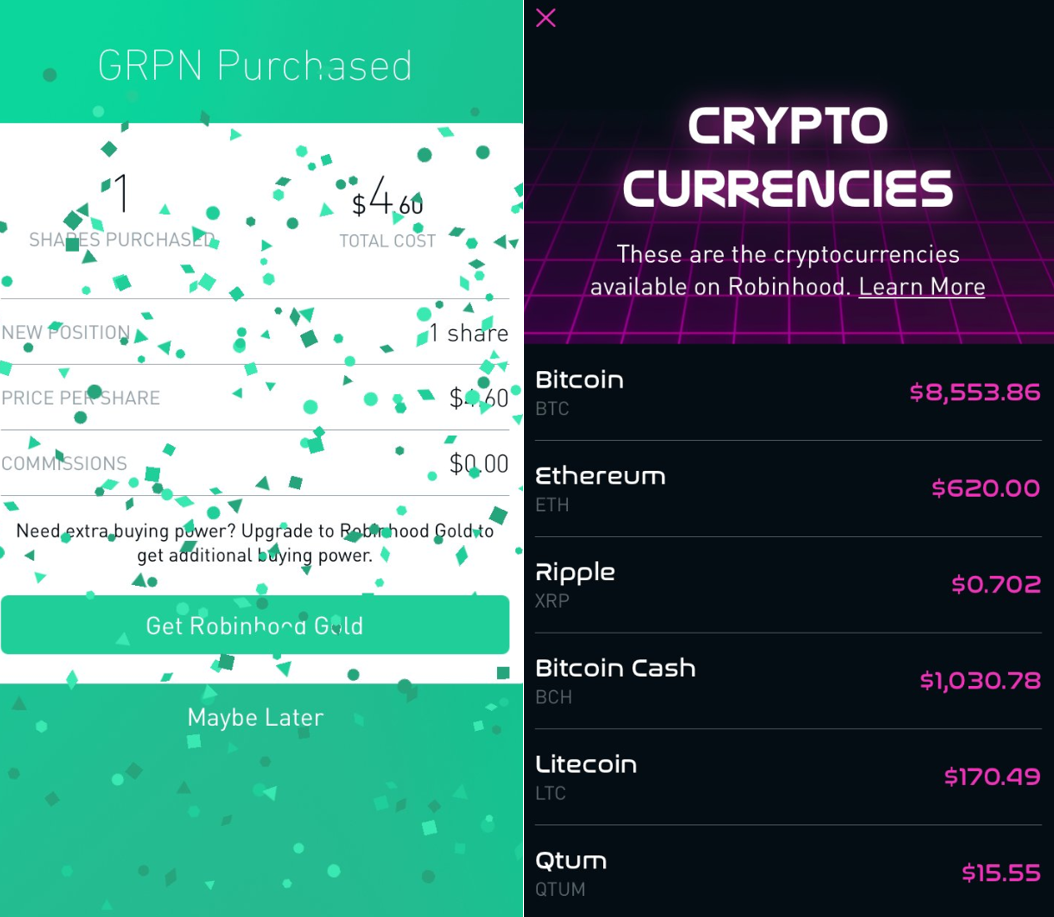Welcome to Thoughts On Money! Today we have another contribution from The Bahnsen Group’s, Kenny Molina. Kenny pulls back the curtain on some of the new FinTech (financial technology) tools and how they might be the gateway “drug” for the next generation of speculators. It’s interesting that these tools which seek to make things more convenient and affordable may have resulted in some unintended consequences. Kenny includes some great research conducted by TBG summer intern, Michael Gaszi. Without further ado, I present to you The High Cost of Free by Kenny Molina.
– Trevor Cummings
*****************************************************************************************************
Investing has been an incredibly powerful tool for many to achieve their retirement and financial goals. Along the way, technological innovations have provided us great service strides such as computerized trading exchanges like the NYSE and NASDAQ and ETFs (Exchange-Traded Fund), which bundle securities and allow investors diversification at an affordable price, to name a few.
The topic of this week’s commentary is to address the steadily growing number of services/applications which seemingly allow all the ‘thrills’ of investing without any of the ‘frills’.
These recent ‘investing’ innovations are complete with flashing icons and stock charts, all designed to entice the investor with the promise of an easy way to make money. What these new platforms have in common is that they have been good at turning access to capital markets into the equivalent of a virtual slot machine, rich with a promise of winnings with little deference to losses.
You’d be forgiven if you mistake the images below for some type of shopping application or retro-themed game; they are in fact the interface of a ‘stock trading’ application known as Robinhood.

Source: Robinhood
There is a lot to say about what the incentives of these applications may be, but my advice for you is tried and true – ‘there is no free lunch’, and in the case of this app above and others like it, if something appears free (e.g., free trades) you’re just not paying for it with cash. These applications make it very easy to trade (read: speculate) and remove many of the frictions that would otherwise dissuade investors counter-productive activity, making it very easy to forgo diligence such as reviewing historical data and research, instead fueling reactionary buying and selling.
The instant gratification and streamlined interactions allows anyone with access to a bank account and a smartphone to impulse buy and sell (at least Amazon Prime still takes two days and has free returns!).
In my fact-gathering of these applications, I had an interesting conversation with Michal Gaszi, our summer intern who directly interacted with a few of these trading apps and learned some important lessons:
My experience with investing, or better said trading, began at 17 years old when a trading platform application convinced me to subscribe. I was scrolling through a social-media application one day when I saw an ad promoting Robinhood, a trading app that is easily set up and needs an initial minimum $5 invested. Although I had been interested in capital markets, at that point I knew little about the importance of understanding the companies I was invested in or adhering to a defined investment strategy. So, there I was, investing in stocks that were categorized as “Highest Gainers” and my first thought was “Wow, this is exciting!” Before I knew it, I had dropped in $200 of hard earned savings. Sure enough, I fell into the very stereotypical category of ‘investors’ that bought high, and when there was some inevitable market sell-off, ended up selling low.
The excitement from being able to ‘invest’ so easily was just hard to resist!
While Michael’s experience is his own, it is certainly not unfamiliar. These services spend a lot of time trying to frame investing as a power to be wrestled back from Wall Street elites, when in fact millions of every-day Americans are already invested in the same companies through their retirement accounts, pensions, and savings. In their bravado, operating under the guise of ‘disruption’ these tools are giving investors access to unprecedented levels of risk.
This graphic below illustrates just one example of access to risk – trading “options.”

Source: Robinhood
The average investor should never undertake option strategies without extensive education and/or qualified guidance. The downside of an options strategy can at best be a worthless expired contract + loss of a premium and at worst expose the investor to increasing levels of risk as the underlying security or counterparty behaves in an unexpected manner and the strategy generates losses which may exceed principal (original investment). Yet, presented as such above makes it look like a simple, clickable choice one can add to their portfolio. There are, of course, plenty of reasons why an options strategy can benefit an investor such as downside protection and risk mitigation.
This app and apps like it seem to be designed to show you only the carrot and let you find the stick down the road.
In the defense of these and many other financial investment platforms, they are meant to provide “access” and not advice. In an effort to market to the DIY investor, the claims are, on the surface, attractive – “we give you access to investments once reserved only for the big guys…” And moreover, they are not incentivized by your success but instead by your “activity” (read: fees) but that’s an even deeper dive.
Capital markets are not something to brave without a plan, without diligence, and without advice. Seek out a fiduciary advisor who is aligned with your interests and do not need to pitch you products or incentivize you to take on risk in order to generate a rebate. If nothing else, think before you act and be able to explain to yourself not only why you’re buying something but exactly how it’s going to help you achieve your goals. Flashing lights, dazzling lines, and on-screen confetti are not what you need to focus on when you’re investing.
Kenny Molina, Solutions and Analytics, Associate of The Bahnsen Group.





